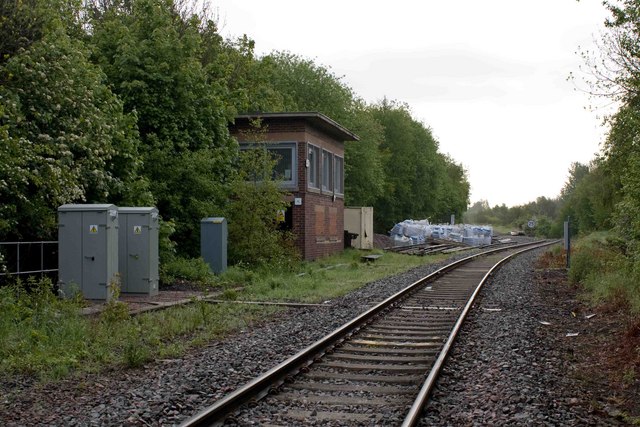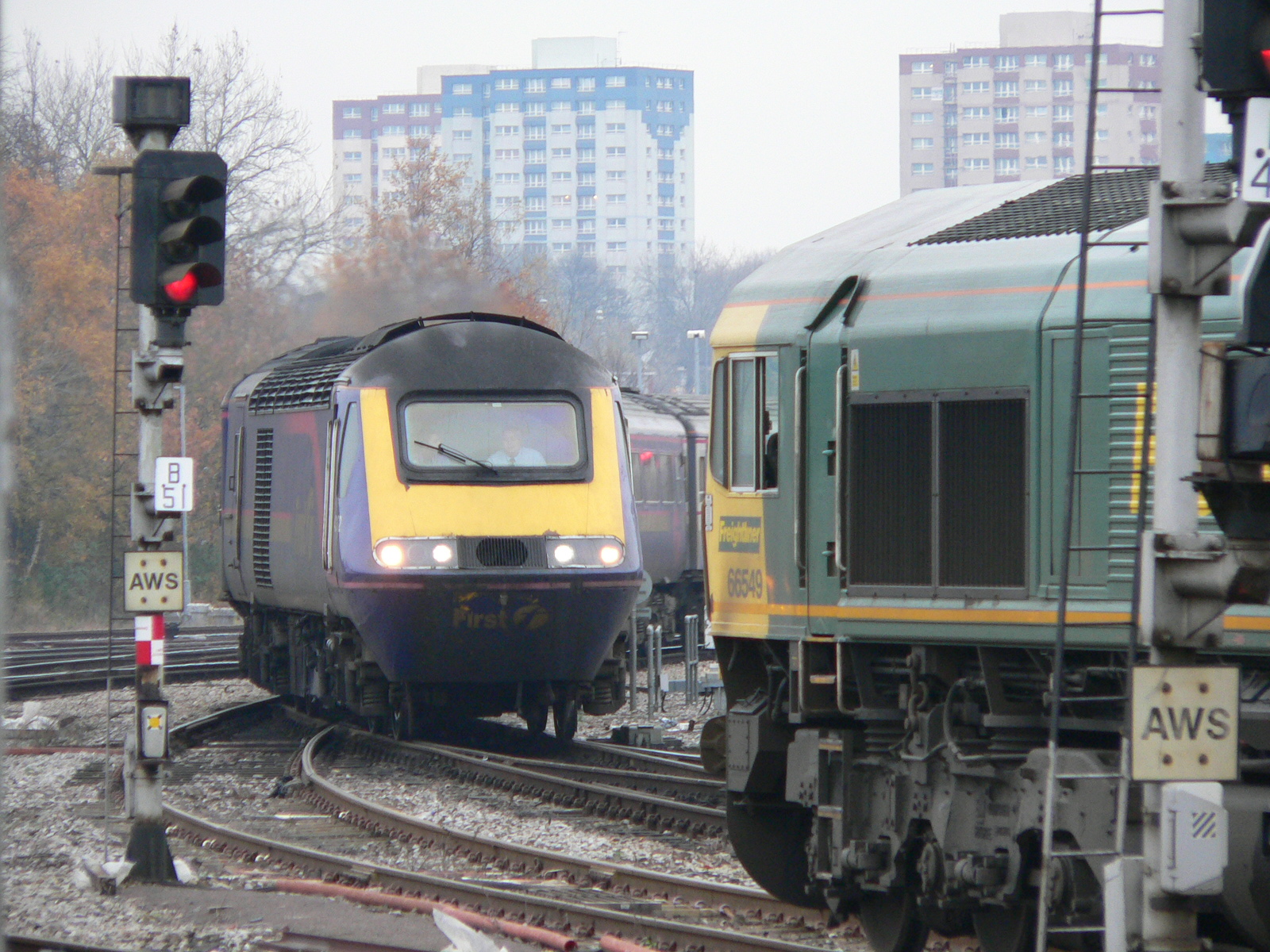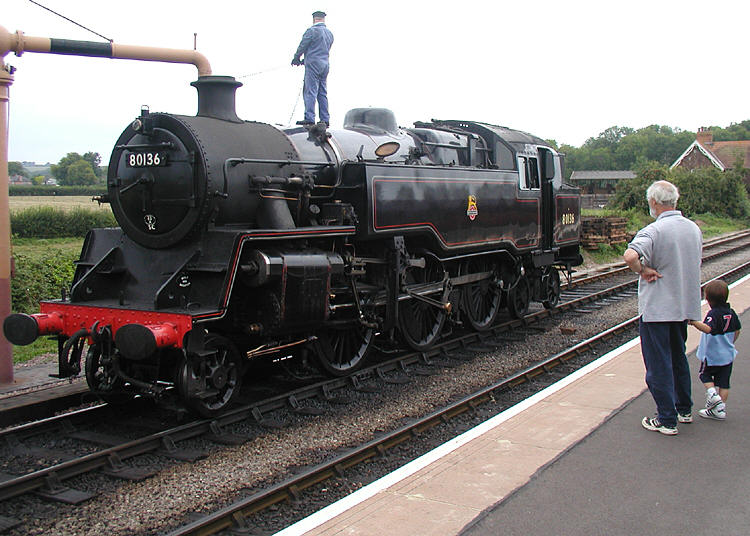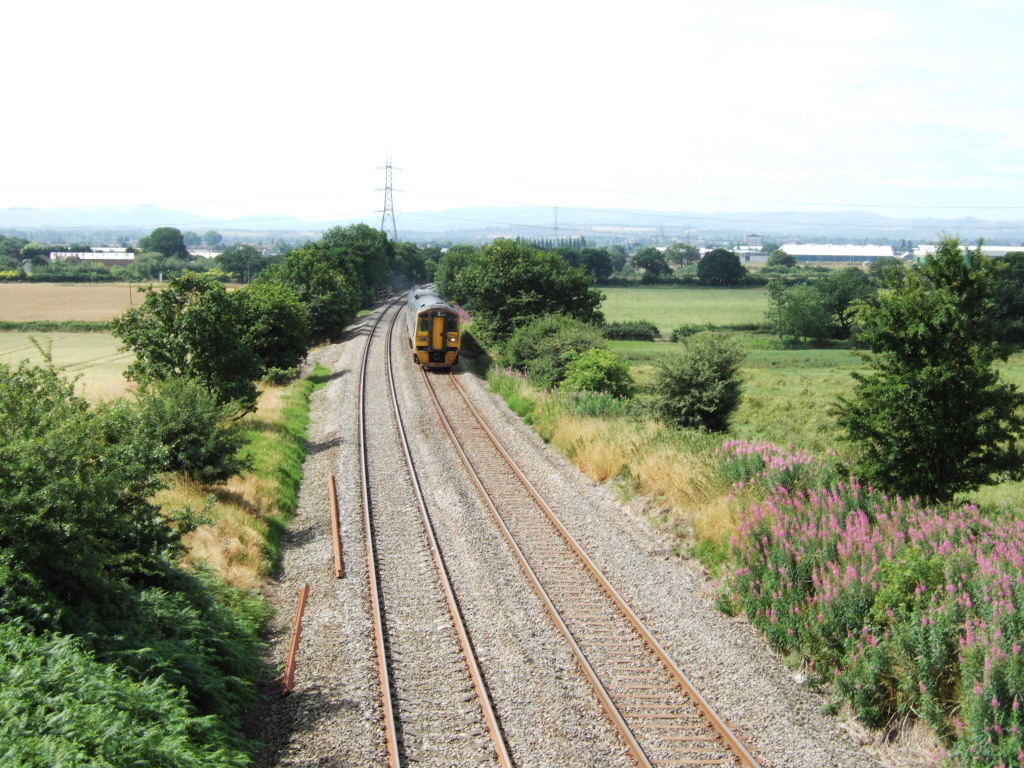|
Lightmoor Junction
Lightmoor Junction was a railway junction between Ironbridge Power Station at Buildwas and Madeley Junction in Shropshire, England. From Lightmoor Junction, a line ran towards Wellington via Doseley and Horsehay. Following the complete closure of this line in 1981, Lightmoor Junction Signal Box was retained to control the connection between the double-track section towards Ironbridge Power Station and the single-track section towards Madeley Junction. The signal box closed on 23 October 2006, when the line towards Ironbridge Power Station was singled, with new signalling controlled from Madeley Junction Signal Box (since 2011 transferred to West Midlands Signalling Centre). Telford Steam Railway use a portion of the former line to Wellington, and intend to use the signal box as part of their heritage railway A heritage railway or heritage railroad (US usage) is a railway operated as living history to re-create or preserve railway scenes of the past. Heritage railways are ... [...More Info...] [...Related Items...] OR: [Wikipedia] [Google] [Baidu] |
Ironbridge Power Station
The Ironbridge power stations (also known as the Buildwas power stations) refers to a series of two power stations that occupied a site on the banks of the River Severn at Buildwas in Shropshire, England. The Ironbridge B Power Station was operated by E.ON UK but the site is now owned by Haworth Group. The station stands near the Ironbridge Gorge World Heritage Site. Originally powered by coal, they were converted to use 100% biomass fuel. Ironbridge B Power Station stopped generating electricity on 20 November 2015, with the decommissioning process continuing into 2017. The main phase of the 27-month demolition process began at 11:00 GMT on 6 December 2019, commencing with the four cooling towers. Ironbridge A (1932–1981) Site selection Ironbridge was selected to be the site of a large, modern "super station" by the West Midlands Joint Electricity Authority, in February 1927. The land had been identified earlier by Walsall Borough as being suitable for power generation, ... [...More Info...] [...Related Items...] OR: [Wikipedia] [Google] [Baidu] |
Buildwas
Buildwas is a village and civil parish in Shropshire, England, on the north bank of the River Severn at . It lies on the B4380 road between Atcham and Ironbridge. The Royal Mail postcodes begin TF6 and TF8. Buildwas Primary Academy is situated on the Buildwas bank road. The school has been running since 1855, and has three classes and a nursery. Buildwas has a nine-hole golf course which runs between the River Severn and Ironbridge Power Station. It is open to members of Buildwas Abbey Club. Village The village of Buildwas has been recognised since 1086 as the first reference to it was made in the Domesday Book. Buildwas was valued at 45 shillings (£2.25) to the Bishop of Chester, i.e. the Bishop of Lichfield and Coventry, the local diocesan bishop, in 1086. The value of the manor was the same as in 1066, although it had slipped in the interim period. Its value lay in its location on the River Severn in its woodland, which was useful for agricultural and farming purpos ... [...More Info...] [...Related Items...] OR: [Wikipedia] [Google] [Baidu] |
Wellington (Shropshire) Railway Station
Wellington railway station serves the town of Wellington, Shropshire, England. It is situated on the former Great Western Railway's London Paddington to Birkenhead via Birmingham Snow Hill line. Trains are operated by West Midlands Railway (who manage the station), Avanti West Coast and Transport for Wales. History The station was built at the junction of the Shrewsbury and Birmingham Railway with the Shropshire Union Railways and Canal Company's line from Stafford via Newport. It was opened on 1 June 1849. The S&BR reached Wolverhampton later that year, but was frustrated in their attempts to reach Birmingham by the London and North Western Railway – it was not until both they and the neighbouring Shrewsbury and Chester Railway became part the Great Western Railway in November 1854 trains could run to . Wellington thereafter was jointly run by the LNWR and Great Western companies until the 1923 Grouping. It subsequently also became a busy junction interchange station, serv ... [...More Info...] [...Related Items...] OR: [Wikipedia] [Google] [Baidu] |
Horsehay
Horsehay is a suburban village on the western outskirts of Dawley, which, along with several other towns and villages, now forms part of the new town of Telford in Shropshire, England. Horsehay lies in the Dawley Hamlets parish, and on the northern edge of the Ironbridge Gorge area. Its name is Anglo-Saxon for 'an enclosure for horses'. Horsehay used to have four pubs, The Station Inn, The Forester Arms, the All Labour In Vain and the Travellers Joy, however The Station Inn closed down in 2012, and the All Labour In Vain closed in 2014. It also has a Methodist Chapel, a village hall, a post office, and a golf course complete with restaurant. History Originally Horsehay was nothing more than a farm, until the 1750s when Abraham Darby II built a blast furnace next to what is now known as Horsehay Pool. The Coalbrookdale Company further developed the area, constructing brickworks and later a pottery in 1838. Coalbrookdale specialised in the smaller and more decorative ironwork p ... [...More Info...] [...Related Items...] OR: [Wikipedia] [Google] [Baidu] |
Signal Box
In signal processing, a signal is a function that conveys information about a phenomenon. Any quantity that can vary over space or time can be used as a signal to share messages between observers. The '' IEEE Transactions on Signal Processing'' includes audio, video, speech, image, sonar, and radar as examples of signal. A signal may also be defined as observable change in a quantity over space or time (a time series), even if it does not carry information. In nature, signals can be actions done by an organism to alert other organisms, ranging from the release of plant chemicals to warn nearby plants of a predator, to sounds or motions made by animals to alert other animals of food. Signaling occurs in all organisms even at cellular levels, with cell signaling. Signaling theory, in evolutionary biology, proposes that a substantial driver for evolution is the ability of animals to communicate with each other by developing ways of signaling. In human engineering, signal ... [...More Info...] [...Related Items...] OR: [Wikipedia] [Google] [Baidu] |
Double-track
A double-track railway usually involves running one track in each direction, compared to a single-track railway where trains in both directions share the same track. Overview In the earliest days of railways in the United Kingdom, most lines were built as double-track because of the difficulty of co-ordinating operations before the invention of the telegraph. The lines also tended to be busy enough to be beyond the capacity of a single track. In the early days the Board of Trade did not consider any single-track railway line to be complete. In the earliest days of railways in the United States most lines were built as single-track for reasons of cost, and very inefficient timetable working systems were used to prevent head-on collisions on single lines. This improved with the development of the telegraph and the train order system. Operation Handedness In any given country, rail traffic generally runs to one side of a double-track line, not always the same side as ... [...More Info...] [...Related Items...] OR: [Wikipedia] [Google] [Baidu] |
Single Track (rail)
A single-track railway is a railway where trains traveling in both directions share the same track. Single track is usually found on lesser-used rail lines, often branch lines, where the level of traffic is not high enough to justify the cost of constructing and maintaining a second track. Advantages and disadvantages Single track is significantly cheaper to build and maintain, but has operational and safety disadvantages. For example, a single-track line that takes 15 minutes to travel through would have capacity for only two trains per hour in each direction safely. By contrast, a double track with signal boxes four minutes apart can allow up to 15 trains per hour in each direction safely, provided all the trains travel at the same speed. This hindrance on the capacity of a single track may be partly overcome by making the track one-way on alternate days, if the single track is not used for public passenger transit. Long freight trains are a problem if the passing ... [...More Info...] [...Related Items...] OR: [Wikipedia] [Google] [Baidu] |
Railway Signalling
Railway signalling (), also called railroad signaling (), is a system used to control the movement of railway traffic. Trains move on fixed rails, making them uniquely susceptible to collision. This susceptibility is exacerbated by the enormous weight and inertia of a train, which makes it difficult to quickly stop when encountering an obstacle. In the UK, the Regulation of Railways Act 1889 introduced a series of requirements on matters such as the implementation of interlocked block signalling and other safety measures as a direct result of the Armagh rail disaster in that year. Most forms of train control involve movement authority being passed from those responsible for each section of a rail network (e.g. a signalman or stationmaster) to the train crew. The set of rules and the physical equipment used to accomplish this determine what is known as the ''method of working'' (UK), ''method of operation'' (US) or ''safeworking'' (Aus.). Not all these methods require the ... [...More Info...] [...Related Items...] OR: [Wikipedia] [Google] [Baidu] |
Telford Steam Railway
The Telford Steam Railway (TSR) is a heritage railway located at Horsehay, Telford in Shropshire, England, formed in 1976. The railway is operated by volunteers on Sundays and Bank Holidays from Easter to the end of September, and at Christmas. Its official business name is the Telford Horsehay Steam Trust (THST), and it is a registered charity. History Telford Steam Railway operates over a portion of the Wellington and Severn Junction railway (W&SJR). The line to Lightmoor and beyond to Buildwas was constructed by the Wenlock, Craven Arms and Lightmoor Extension railway. Both of these became a part of the Wellington to Craven Arms Railway. For most of its working life the line was operated by the Great Western Railway and subsequently the Western Region of British Railways. The line directions between Buildwas and Lightmoor were counter-intuitive for a period when the line going down the hill was the Up Line (towards London), and the line going up the hill was the Down ... [...More Info...] [...Related Items...] OR: [Wikipedia] [Google] [Baidu] |
Heritage Railway
A heritage railway or heritage railroad (US usage) is a railway operated as living history to re-create or preserve railway scenes of the past. Heritage railways are often old railway lines preserved in a state depicting a period (or periods) in the history of rail transport. Definition The British Office of Rail and Road defines heritage railways as follows:...'lines of local interest', museum railways or tourist railways that have retained or assumed the character and appearance and operating practices of railways of former times. Several lines that operate in isolation provide genuine transport facilities, providing community links. Most lines constitute tourist or educational attractions in their own right. Much of the rolling stock and other equipment used on these systems is original and is of historic value in its own right. Many systems aim to replicate both the look and operating practices of historic former railways companies. Infrastructure Heritage railway line ... [...More Info...] [...Related Items...] OR: [Wikipedia] [Google] [Baidu] |
Rail Transport In Shropshire
The English county of Shropshire has a fairly large railway network, with 19 National Rail stations on various national lines; there are also a small number of heritage and freight lines, including the famous heritage Severn Valley Railway running along its eastern border with Worcestershire. The majority of the county's public rail services are run by Transport for Wales Rail; the remainder are run by West Midlands Trains (under their ''West Midlands Railway'' brand) and Avanti West Coast. National Rail services National Rail services in Shropshire are centred about Shrewsbury station (all other 'national rail' stations in Shropshire have a direct train service to Shrewsbury, which is the county town), which is managed by Transport for Wales. The station is at the junction of the Wolverhampton to Shrewsbury Line, Shrewsbury to Chester Line, the Welsh Marches Line (between Cardiff and Manchester) and the Cambrian Line (towards Welshpool). Craven Arms station is ... [...More Info...] [...Related Items...] OR: [Wikipedia] [Google] [Baidu] |


.jpg)
_station_geograph-2475411-by-Ben-Brooksbank.jpg)





